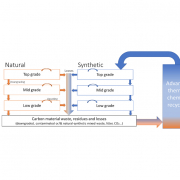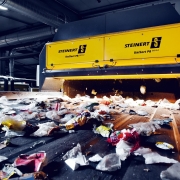Conveyor Belts for Modern Sorting Technology
Even though the heart of the Austrian-based company beats for sorting technology, Redwave saw the need to invest in the research and development of conveyor belts specially optimized for use in the recycling sector.
“In the past, we often had to live with compromise solutions when purchasing standardized conveyor belts. In many cases, the systems lacked adaptability with regard to customer conditions and needs, such as a small footprint. In addition, we were dependent on the supplier with regard to delivery dates,” Managing Director Manfred Hödl explained. These were the reasons that led Redwave, a division of Austrian BT-Wolfgang Binder GmbH, to develop conveyor belts specifically designed for the recycling industry.
According to the company, this would enable an improved and optimized feeding of the materials to the respective machine equipment. “Sorting machines, for example, can be optimally fed with conveyor belts that are adapted to the respective recycling materials. This in turn also has a positive effect on the quality of the end product or the throughput.” Besides, compromise solutions, with which customers were confronted in some cases due to external purchasing, were largely eliminated. “Where space is limited, no ‘emergency solutions’ are created, but instead individual and efficient customer solutions.”
The requirements for conveyor belts in the recycling industry differ significantly from the requirements of other industries such as the automotive, food or mining industries, the company underlined. Even within the recycling industry, the requirements are not identical, because waste glass fragments behave differently from, for example, waste paper, plastics or scrap metal.
During the development process, great importance was attached to ease of maintenance, low maintenance requirements and user-friendliness of the conveyor belts, Redwave assured. “For example, removable sheet metal cladding and swivelling floor panels make cleaning easier and minimize the amount of maintenance required. External lubrication points also improve accessibility enormously and offer time savings.” Another point in the sorting process that should not be underestimated is the issue of dust formation. For this reason, special solutions have been developed for the belt seals (covers and gutter seals), “which are adapted to the respective material that is sorted in the recycling plant”.
The conveyor belts themselves are currently installed in Redwave systems as troughed belt conveyor, sliding belt conveyor and chain belt conveyor. The products are characterized by their modular design: It allows a simple modification of the conveyor belt length afterward, but also additional equipment (sensors, weighing system, scraper) can be retrofitted easily.
“Smart” solution
Almost everything is called “smart” these days. The list is endless and the little word “smart” is ubiquitous, referring to the increasing number of connected technologies designed to make life easier. This trend does not stop at Redwave conveyor belts, the company emphasized. A networked integration of the conveyor belts into the entire sorting system should further improve or optimize the sorting process. This integration would take place through the integration of Redwave mate, the intelligent artificial support in the recycling plant.
www.redwave.com/en/products/conveyor-belts
(Published in GLOBAL RECYCLING Magazine 2/2021, Page 54, Photo: Redwave/BT-Wolfgang Binder)








